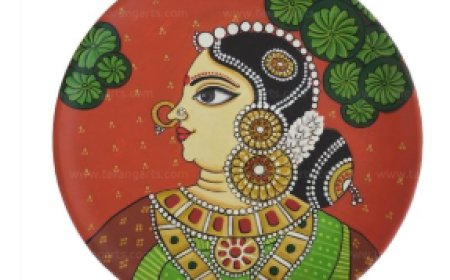Discover the Rich Flavors of Traditional Armenian Soups
Like robust flavors-wholesome ingredients-and ties to culture and tradition, Armenian cuisine has made its mark.
Like robust flavors-wholesome ingredients-and ties to culture and tradition, Armenian cuisine has made its mark. While Armenian cuisine has broadly been stereotyped to include lavash, dolma, and khorovats, yet there is another worthy cornerstone of Armenian cuisine-in time, equally much appreciated: the soups. Since traditional Armenian soups are tasty, they almost always are a part and parcel of Armenian historiography as comfort food, celebratory dishes, or everyday fare which nurture the body and spirit.
Armenian soups, from rich, heavy, meat-stuffed ones to pleasant vegetable broths, display the sundry far-flung geography, climes, and agrarian upright of Armenia. They are built layer upon layer of flavors and usually incorporate local herbs, legumes, dairy, and grains. In this article, we will take a look at the Armenian soup world and ascertain the reasons behind the affection of Armenian culinary culture toward these meals.
A Heritage of Warmth and Nourishment
In Armenia, soups are much more than just an appetizerthey are an irrefutable part of the meal and frequently worthy of being called the main course. From the frostbitten mountain villages to the fervid homes of the townthe steaming bowl of soup is an ultimate omen of comfort, providing nourishment, warmth, and a pinching feeling about home.
Soup recipes have been the gift passed down over the generations in Armenia and are often linked to the changing seasons or special holidays, or sometimes even local myths. Some recipes bear the mark of being peasant fare, sitting around to make use of whatever ingredients are at hand, and others are set aside for special feasts and family celebrations.
The focus on flavor is what makes Armenian soups really special. They combine earthy, tangy, and savory tones with fresh herbs and rustic ingredients. They are a pride of the regional diversity of Armenia, with charming variants different in every province and village.
The Hearty World of Armenian Soups with Meat
If there is a well-known group when it comes to traditional Armenian food, it is that containing the meat soups. These dishes stand out in colder seasons for being such basked in warmth and rich flavor.
1. Khash
Khash is probably the most popular Armenian meat soup and a real stalwart of winter. It is prepared by boiling cow's feet with garlic and water for several hours to develop an excellent broth. This is really more than just a meal; it has become a sacred social tradition, offered before sunrise. They eat khash with bread (lavash), radishes, and often a shot of vodka to finish the meal; all that makes for a communal experience. Khash is really more than food-the-eating: it is genuinely celebratory gathering that harks back to heritage and togetherness.
2. Spas (Tanapur)
Spas is classically a yogurt soup, however, sometimes it permits the trace of a meat or chicken stock. A creamy, tangy delight made from Armenian yogurt (matzoon), wheat or rice, and fresh herbs such as cilantro or mint and sometimes with meat broth: Let me tell you, it is world-famous, bringing the right argument of being either heavy or light, warm or cold.
3. Arishta with Meat Broth
Armenian-style host-cut noodles, Arishta are customarily served in a heavy and tasty meat broth. One of the big joys of making this simple yet satisfying soup is combining homemade noodles mixed with a nicely seasoned broth of beef or lamb bones. It is a nostalgic dish in the countryside and families that want good old home cooking.
Vegetarian and Grain-Based Delights
While Armenian meats hold the very special place in the food culture, the land is just overflowing with an array of vegetarian food options, often highlighting a grain or legume. These soups are the taste-so-good-nutrient-rich counterparts, bringing to life Armenia's farming heritage.
1. Dzhash
A Dzhash is a generic term used for a number of stews and soups. Lentil Dzhash Prototypical: A stew made with red lentils, onions, garlic, and any selection of dried herbs. Very hearty, fast to prepare; in keeping with tradition, it is served during Lent and other fasting periods.
2. Tarkhana (Tarhana)
More interesting is Tarkhana: dried yogurt dough with herbs. Given a few additions of spices or broth or a minimum of a pinch of meat and vegetables, all are considered ready to be rehydrated with hot water. So, it is one such food that showcases the Armenian ingenuity in preserving food during the winter in ways that remain palatable and nutritious.
3. Khurjin Soup
From the Lori province, Khurjin Soup appears as a highly regionally favored garden party, featuring legumes such as beans or chickpeas, potatoes, and lively greens such as spinach or sorrel. Some reckon with meat; the veg woes are just as wholesome and hearty. It is a rustic meal that truly exemplifies the simplicity and warmth of Armenian countryside cooking.
Soul soupsand holiday affairs
Soups have always been instrumental during holiday feasts and celebrations in Armenian culture. For Christmas, families often whip up light broths featuring fish or grains. During Easter, the table might present a good sour lamb soup or a tangy yogurt-based version.
In many Armenian homes, making soup for a special guest is a touching show of hospitality. It would hardly surprise you to be welcomed with soup any time of the day in someones home, especially in winter.
Soups hold importance in mourning and remembrance ceremonies and are much served at memorial or commemoration meals. It comforts one physically in healing and spiritually.


































